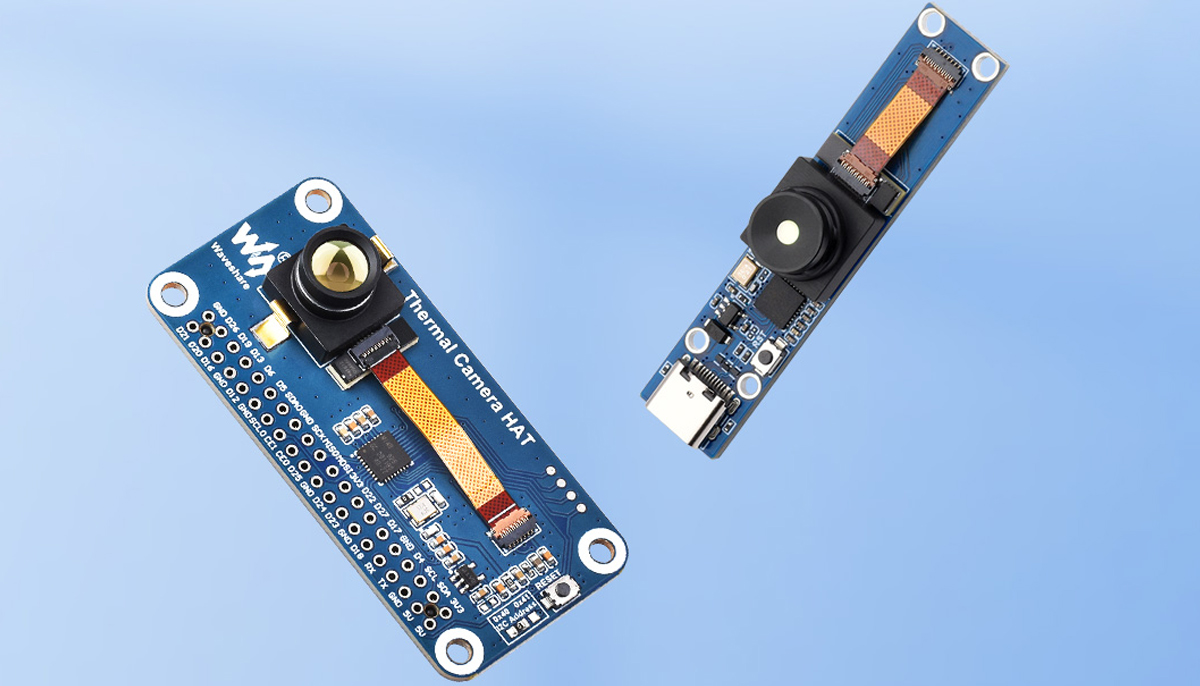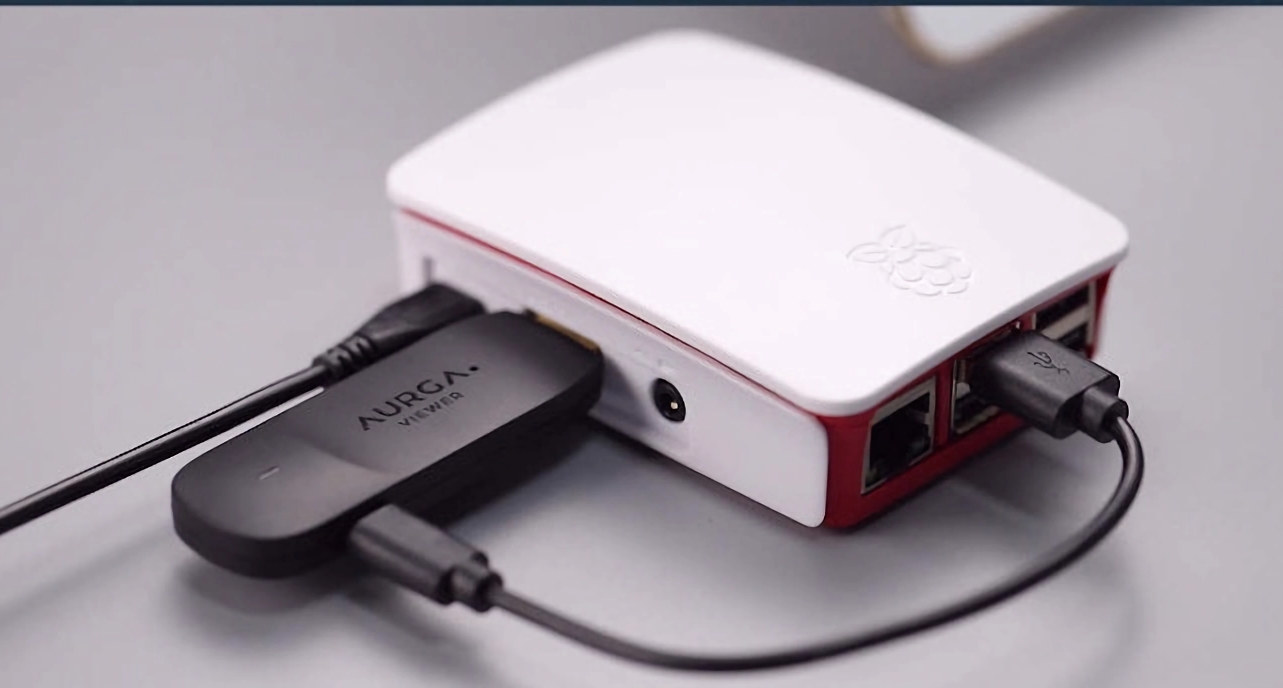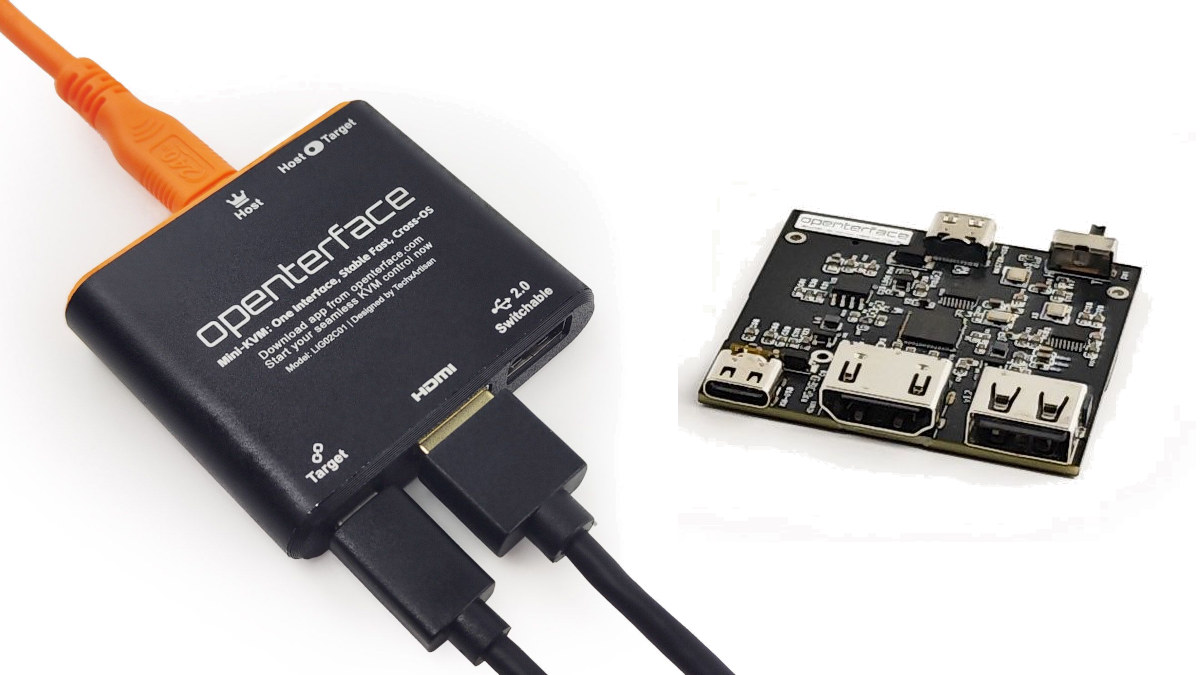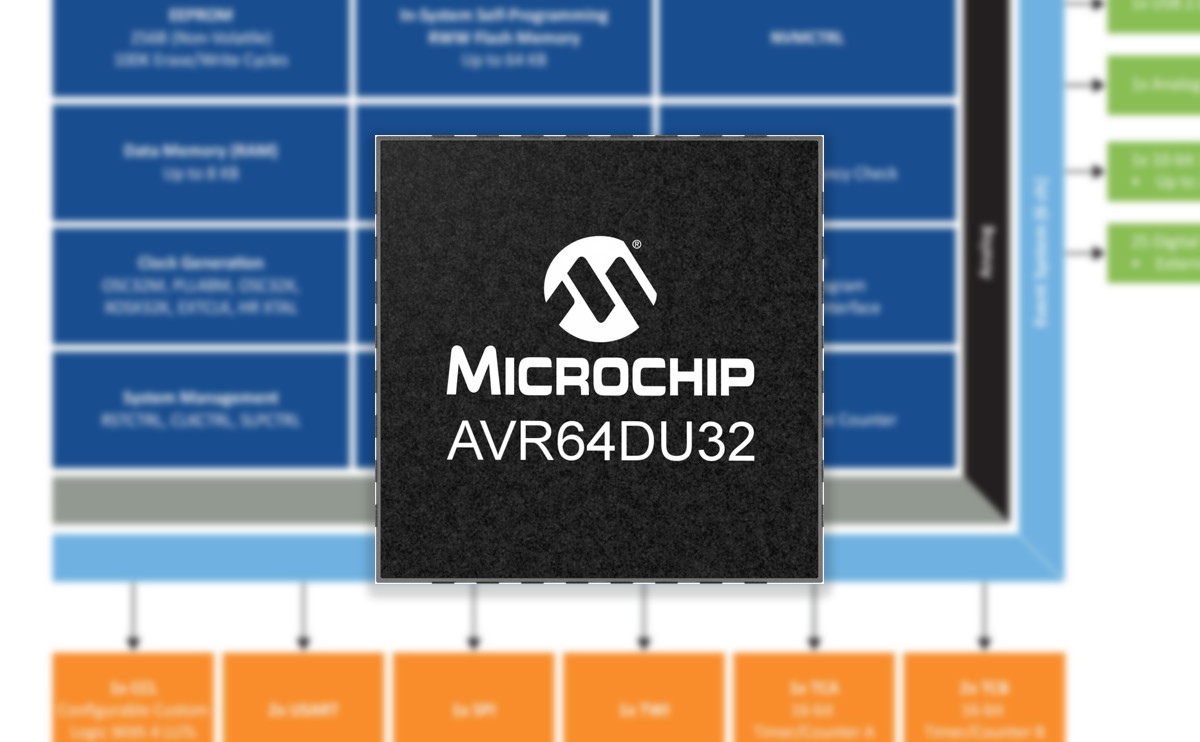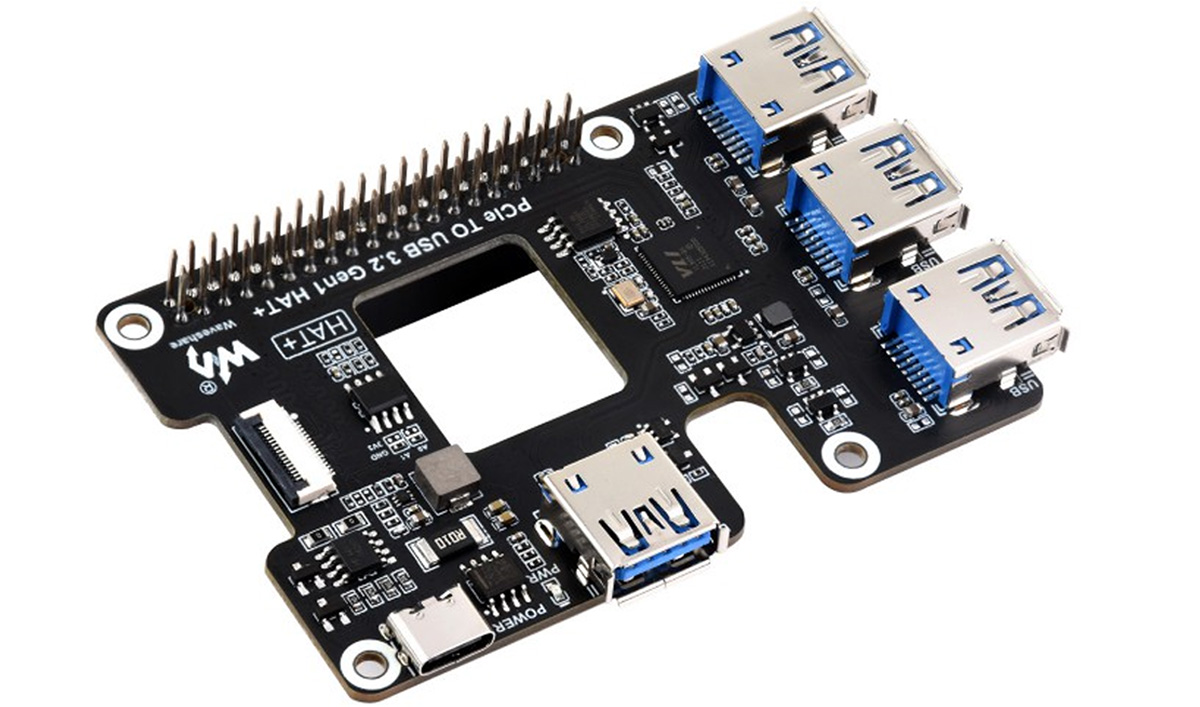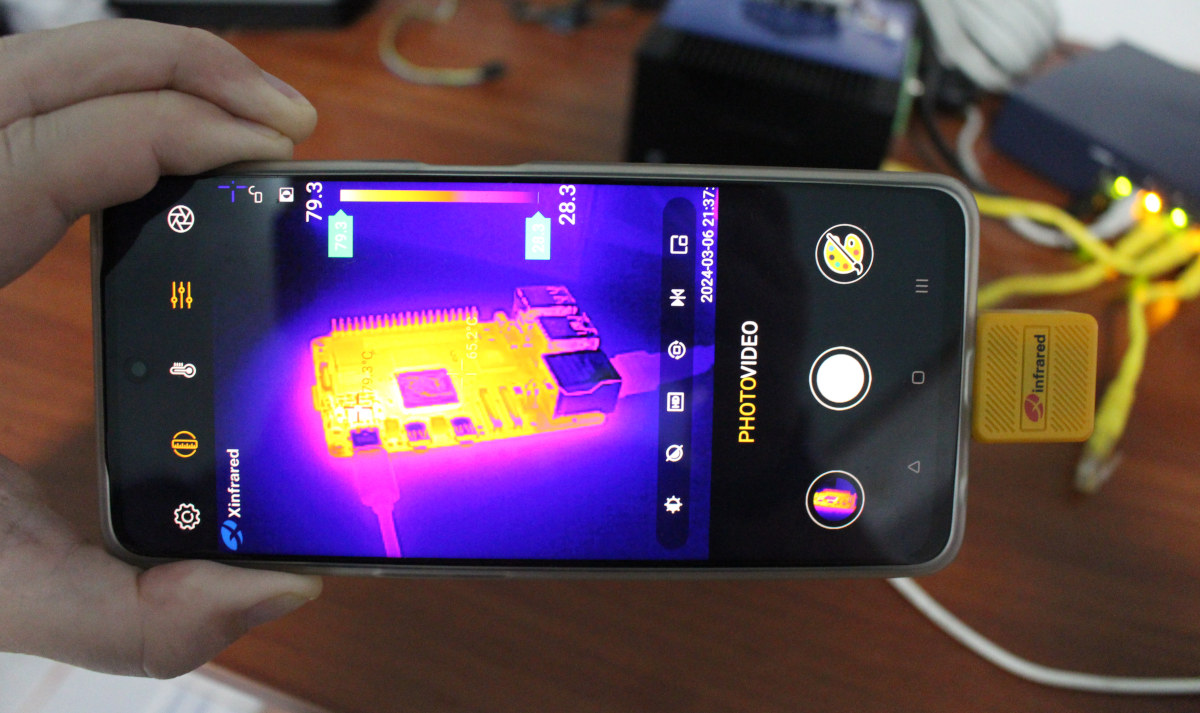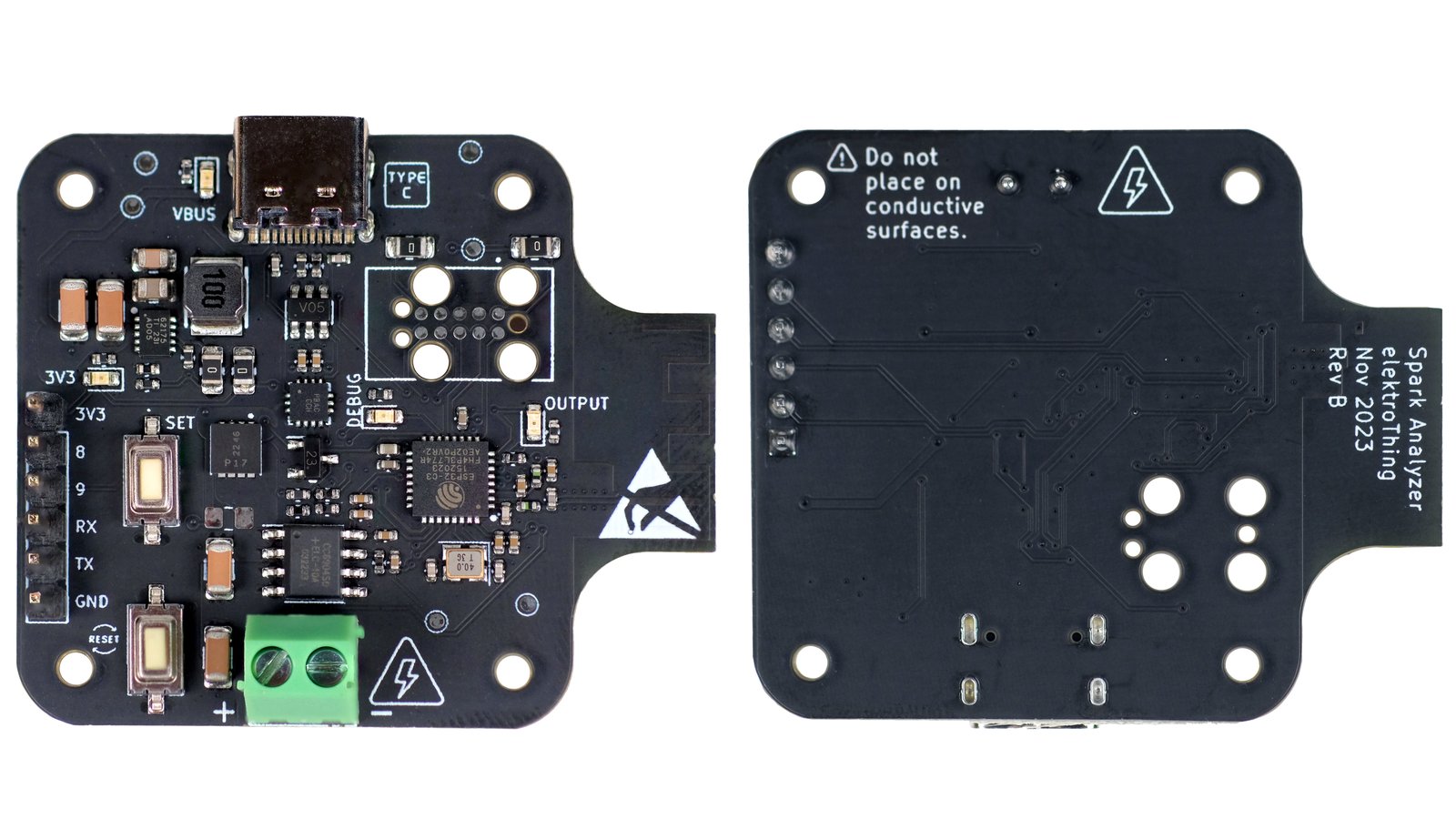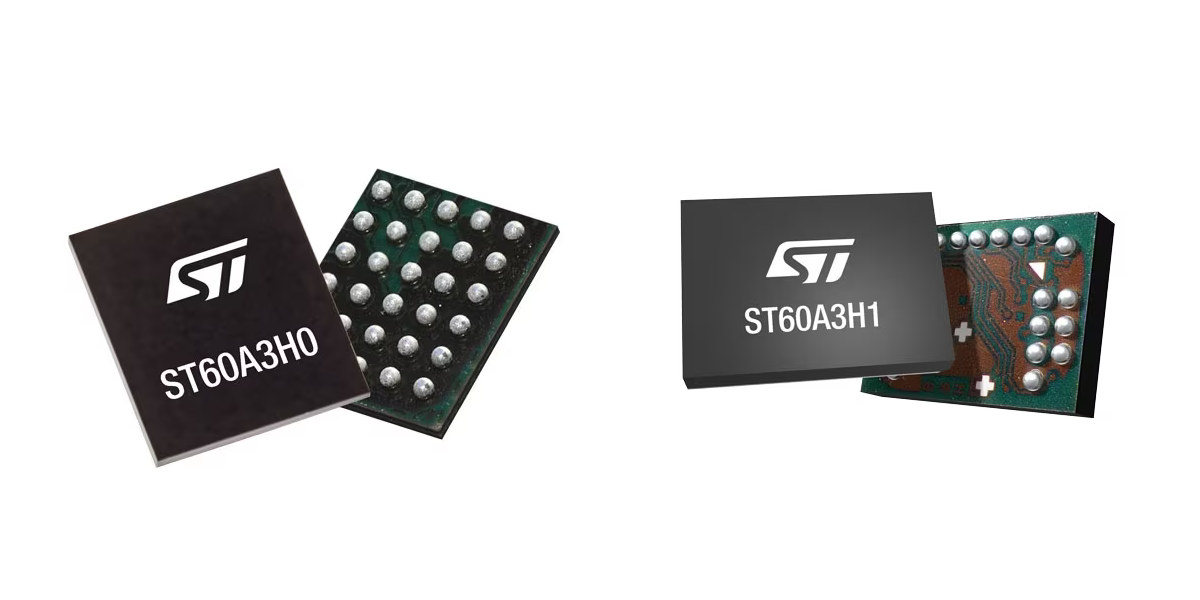The Waveshare Thermal Imaging Camera module comes in two variants, namely the Thermal-45/90 Camera Raspberry Pi HAT and Thermal-45/90 USB Camera. The main difference between the two is that the HAT is designed to be attached to a Raspberry Pi, Pi Zero, or any other SBC that features a Pi-compatible pin layout like the Sipeed Longan Pi3H, Banana Pi BPI-M4, Radxa Zero 3W SBC, and others. On the other hand, the USB module can be connected to any PC, Android, or other device with a USB connection. The camera features a shutterless design, which is why it can produce a thermal imaging video stream output of up to 25 frames per second (FPS). Additionally, Waveshare offers options for different fields of view (FOV) – a basic version with a 45° FOV and a wide-angle version with a 90° FOV, making it suitable for applications like IR thermometers, industrial temperature control, […]
Convert your tablet or smartphone into a touchscreen display for your PC, motherboard, etc… with the AURGA Viewer
The AURGA viewer is an HDMI and USB dongle with WiFi and Bluetooth connectivity that plugs into any system with HDMI output and can convert any smartphone, tablet, or laptop with a touchscreen display into a KVM solution by sending video data, as well as keyboard and mouse events wirelessly. We’ve recently written about Openterface Mini-KVM KVM-over-USB device that allows users to use their laptop to control another device with HDMI output locally without any additional display, keyboard, and mouse. But I’ve just been informed the AURGA Viewer, launched in 2022 on Kickstarter, can do something similar wirelessly. AURGA Viewer specifications and features: SoC – Allwinner S3 Cortex-A7 processor with 128MB DDR3 HDMI input – Male HDMI port with Toshiba TC35874x HDMI to MIPI CSI-2 bridge internally (See comments section); Works with VGA, mini HDMI, micro HDMI, etc… using adapters Wireless – Broadcom BCM4345C5 SDIO 802.11AC WiFi 5 and Bluetooth […]
Openterface Mini-KVM is an affordable KVM-over-USB device (Crowdfunding)
Openterface Mini-KVM compact, open-source hardware KVM-over-USB device with HDMI and audio inputs which connects over a USB-C port to the host computer. We’ve seen quite a few low-cost KVM-over-IP solutions based on single board computers over the years, but the Openterface Mini-KVM is quite different (and cheaper) as a plug-and-play and network-independent KVM-over-USB device that establishes a direct HDMI and USB connection between the host computer and the target device. It supports many of the same features as KVM-over-IP solutions except for some features such as ATX support found in the PiKVM v4 Plus or the Pi-Cast KVM with an expansion board that allows the target device to be turned off and from the host device. Mini-KVM (model LIG03D01) specifications: Control method – KVM-over-USB Video capture – Up to 1920×1080 @ 30 Hz with under 140ms latency through HDMI or VGA (the latter requires an add-on VGA-to-HDMI cable) Audio capture […]
Microchip 8-bit AVR DU family supports secure USB connectivity and 15W power delivery
At Embedded World 2024, Microchip announced their new AVR DU family of 8-bit MCUs featuring a full-speed USB 2.0 data interface along with USB-C 15W Power Delivery enabling up to 12Mbps data transfer and charging. They also have features like secure bootloaders and Program and Debug Interface Disable (PDID), which protect your embedded designs. Based on the Harvard architecture, these MCUs can have up to 64 KB of Flash memory, 8 KB of SRAM, and 256 bytes of EEPROM. Their wide operating voltage range of 1.8V to 5.5V makes them suitable for small, space-sensitive devices, power bricks, and rechargeable devices. But one thing to note is that the USB function is only available for VDD above 3.0V and I2C Fm+ (Fast-mode Plus) is only supported for 2.7V and above. I²C Fm+ extends the standard I²C protocol, boosting communication speeds up to 1 MHz while maintaining compatibility with older I²C devices. It’s […]
Waveshare PCIe to USB 3.2 HAT+ adds four USB ports to Raspberry Pi 5
Waveshare ‘PCIe to USB 3.2 HAT+’ is an expansion hat that adds four USB 3.2 ports to the Raspberry Pi 5. The HAT+ features real-time power status monitoring and software-controlled USB power management, along with an onboard EEPROM for storing HAT ID and product data. The HAT is mounted on top of the Raspberry Pi cooler and has an airflow vent to help keep the Pi cool. This new module leverages the HAT+ standard to add 4 additional USB 3.2 ports to the Raspberry Pi 5. Previously, boards like PineBerry Pi HAT+, Geekworm X1003/X1004, and Mcuzone MPW7 have used the HAT+ standard for various attachments, such as converting the Pi 5’s PCIe into an NVMe SSD adapter, enabling access to Google’s TPU, or adding a PCIe x16 socket. Waveshare PCIe to USB 3.2 HAT+ Specifications PCIe x1 Gen2 mode Only supports Raspberry Pi 5 Model B. Equipped with VL805 original […]
Xtherm II TS2+ review – A 256×192 thermal imager tested with an Android smartphone
Shortly after I wrote about the Mustool MT13S 2-in-1 thermal imager and multimeter, Xinfrared asked me if I wanted to review the Xtherm II TS2+ thermal imager for smartphones. They offer versions that work for Android or iOS smartphones, so the company sent me the Android version of the Xtherm II TS2+ for review. After listing the key features and specifications, I’ll go through an unboxing, and report my experience using the thermal imager with the OPPO A98 5G smartphone running Android 14. Xtherm II TS2+ specifications Minimum focus – 8mm Resolution – 256×192 Pixel Pitch – 12μm FOV – 44.9° x 33.4° Image Frame Rate – 25Hz NETD (Noise Equivalent Temperature Difference) – ≤40mK@25°C, F#1.0 MRTD (Minimum Resolvable Temperature Difference) – ≤500mK@25°C,F#1.0 Temperature Range Measurements- -20°C ~ +450°C with ±2°C or ±2% reading accuracy Operating – -20°C ~ +50°C Temperature Correction – Manual/automatic Power Consumption – <350mW Dimensions – […]
Spark Analyzer is a USB-C PD analyzer and power supply based on ESP32-C3 (Crowdfunding)
Spark Analyzer is an ESP32-C3-powered device built to streamline the process of developing and debugging USB-C Power Delivery (UCPD) solutions. The board’s design is simple, compact, and includes helpful power delivery and analysis functionality, at an affordable price. Spark Analyzer runs on an ESP32-C3FH4 microcontroller, a low-power SoC with a single-core RISC-V CPU with onboard 2.4 GHz Wi-Fi and Bluetooth 5 (Low Energy) connectivity. The wireless chip lets users control the Spark Analyzer and monitor its operation remotely. It also supports integration with other smart devices via Matter. The device allows you to adjust voltage output from 5V to 20V, depending on your project requirements. Power is sent to a connected device via the two-pin screw terminal block on the device, and a Cross Chip sensor measures the electrical current sent through the device using Hall effect. It includes a software safety feature that turns off the output field-effect […]
STMicro ST60A3H0 and ST60A3H1 60 GHz transceiver ICs aim to replace USB cables
STMicro ST60A3H0 and ST60A3H1 are short-range 60 GHz transceiver ICs that tunnel eUSB2, I2C, SPI, UART, and GPIO signals and aim to replace USB and other cables in consumer devices such as digital cameras, wearables, portable hard drives, and small gaming terminals. They should also find their way into industrial applications such as rotating machinery where cable use may be challenging. The smaller ST60A3H0 chip provides more flexibility and requires an external antenna, while the ST60A3H1 chip is a fully integrated solution with a built-in linear antenna. Both are capable of USB 2.0 speeds of up to 480 Mbps and support UART, GPIO, and/or I2C signals so they are not limited to USB cables and can be used in a range of applications. ST60A3H0 and ST60A3H1 key features and specifications: 60 GHz V-Band transceiver for short-range contactless connectivity up to 480 Mbit/s eUSB2, UART, GPIO, or I2C RF tunneling Low […]


